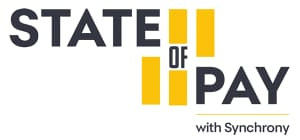Article
November 27, 2019, 4:09 PM EST

Landing Page Title - 6 Ways to Keep Your Digital Savings and Spending Safe
As Americans spend more and more time online, their money is following them onto the web. Money now lives on shopping websites, in online bank accounts and in payment apps. But just how much money are we talking about?
Consumers spent $453.5 billion on the web for retail purchases in 2017. That’s a 16% increase over 2016 and the highest growth rate since 2011. Meanwhile, 60% of the U.S. population—roughly 150 million people—did some sort of online banking last year. You are likely one of them, so the question becomes: What did you do to keep your identity and money safe?
The following six strategies will help you be proactive about your own security. Protecting yourself and your data online isn’t hard, it just takes common sense and caution. Follow these steps to avoid hackers and malicious software.
1. Be wary of public Wi-Fi.
The pull of public Wi-Fi can be strong, yet few people consider the actual source before logging on to a free network. Cyber criminals may set up a private network and make it appear to be free public Wi-Fi, luring in users. Once logged on, the hacker has a direct line into a user’s device, be it a computer or smartphone. It’s a terrifying situation in which the hacker can steal private information or install spyware.
A safer way to use Wi-Fi while on the go is to use the personal hotspot feature on your phone. Basically, you use your own cellular connection as mobile Wi-Fi. Activate it in your general settings app, then enter the supplied password on other devices, such as your laptop or tablet. While it’s not free, you are using bandwidth you’re likely already paying for as part of your monthly phone bill.
“It’s worth the data,” says Hemu Nigam, founder of SSP Blue, an Internet security consultant business, and former vice president of worldwide internet enforcement at the Motion Picture Association of America. Just keep an eye on your usage so you don’t incur overages.

2. Beware online shopping risks.
Using credit cards is smart when shopping online, as you can dispute fraudulent charges, should they arise. PayPal is another good option, but, again, tie it to a credit card and not directly to your bank account or debit card in case of fraudulent charges.
Pay attention to the sites you shop on and go with familiar names. Some online “stores” may actually be fronts for scam artists, who can take the credit or debit card information you enter and either run up charges or sell that information.
“Shop at the same place online as you would go in the physical world, rather than going to the best deal at unheard places,” says Nigam.
3. Check every website’s security.
This is simple and key. Any time you’re asked to enter personal or financial information at a website, pause and take a close look the upper left corner of your browser.
The URL should begin with “https” instead of “http.” To the left of the address should be a small graphic of a padlock, depending on your browser. Both signs indicate that the site encrypts the information that passes between your browser and the website—making it much harder for someone to intercept that data.
Author Name: CJ Prince
Author bio: C.J. Prince is a freelance writer who covers finance, business strategy and leadership. Her work has been published in Working Mother, Entrepreneur and New Jersey Monthly, as well as many financial websites and magazines.
Disclosures:
This article previously appeared on the Synchrony Bank website.


